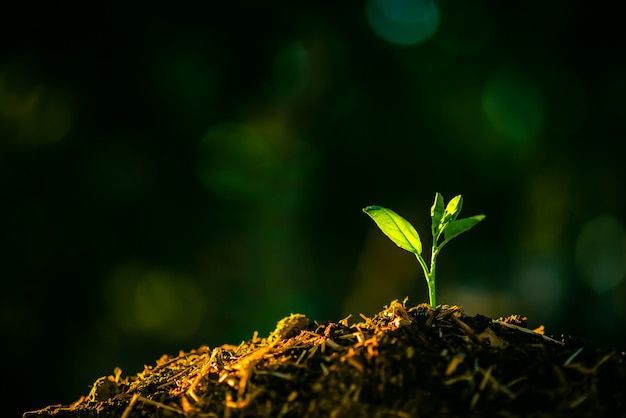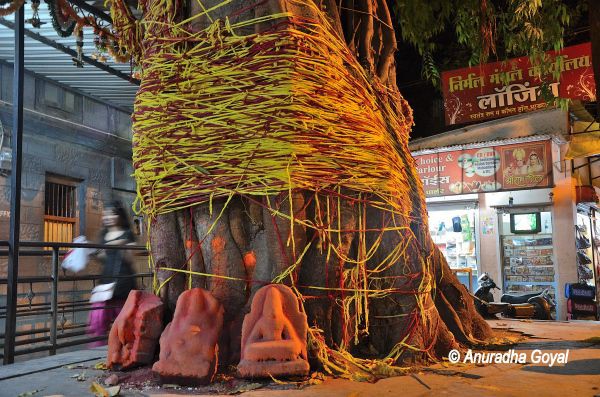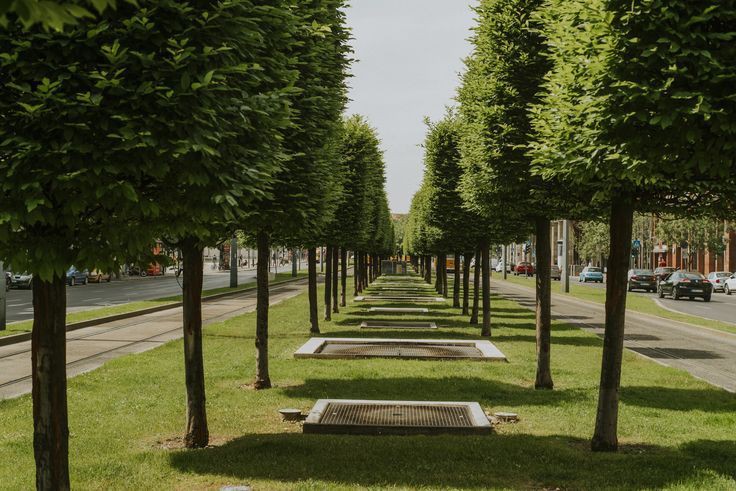Preliminary Overview
In a significant step toward environmental preservation and cultural conservation, the Panchatattva Foundation and Bharat Adhyayan Sansthan have started on an ambitious mission to plant 10 million Panchavati trees along the historic road connecting Kashi (Varanasi) and Ayodhya. The notion of Panchatattva, which refers to the five primary components of life—earth, water, fire, air, and ether—is firmly embedded in this effort, which strives to revitalize the natural environment while simultaneously contributing to the development of cultural and spiritual consciousness.

It was in the Panchatattva village of Akodha, which is situated close to the Varuna River in Uttar Pradesh, that the mission venture was initiated. This huge effort was officially put into motion when the well-known environmentalist Shipra Pathak, commonly known as the "Water Woman," planted fifty mango seedlings over the landscape. The objective of the campaign is to plant not only trees but also elements that represent life and sustenance, with the goal of contributing to the preservation of the natural and spiritual history of the region. This unique initiative, which aims to construct a green corridor from Kashi to Ayodhya, is discussed in depth in this article, exploring its significance, structure, and goal.
Significance of Panchavati and the Role of Panchatattva
Mango (Mangifera indica), peepal (Ficus religiosa), banyan (Ficus benghalensis), pakar (Ficus virens), and jamun (Syzygium cumini) are the five sacred trees that are traditionally associated with Indian spirituality. The term "Panchavati" makes reference to this cluster of trees. These trees are not only treasured in Hindu culture for their relationship with mythology and spirituality but also serve as crucial components of the ecosystem due to their contribution to air purification, soil enrichment, and biodiversity support.
The Panchatattva philosophy, which emphasizes the interconnection of the five primary elements — earth, water, fire, air, and ether — is the core of this endeavor. The project strives to restore balance in these aspects through tree planting, so encouraging environmental sustainability while simultaneously commemorating India's rich cultural legacy.
By focusing on planting Panchavati trees, the effort coincides with the Panchatattva ideology and emphasizes environmental healing as a means to spiritual and physical well-being. These five trees are viewed as representations of the five elements, and their extensive plantation attempts to create a peaceful atmosphere where nature and mankind coexist.
The Environmental and Cultural Impact of the Initiative
Reforestation and Environmental Protection
The planting of 10 million trees across a broad area of land will bring key reforestation benefits, including soil conservation, water retention, and greater biodiversity. The selection of Panchavati trees is particularly notable for their environmental contributions. For instance:
- Peepal and Banyan: These huge, sturdy trees are noted for their enormous root systems that help in reducing soil erosion. They are also prolific oxygen generators, playing a critical role in reducing air pollution.
- Mango and Jamun: Fruit-bearing trees like this not only feed wildlife but also provide food for local residents. Their dense foliage affords shade and cools the environment, minimizing the urban heat island effect in places that have been severely industrialized or deforested.
- Pakar: This less common tree is significant for its medicinal capabilities and its contribution to local ecosystems.
Moreover, the program highlights the need of long-term tree conservation, with each town accepting responsibility for nurturing and maintaining the saplings planted within its limits.
Cultural Revival and Spiritual Significance
Beyond environmental benefits, this project offers significant cultural and spiritual worth. The corridor between Kashi and Ayodhya is considered sacred, with historical and theological significance in Hinduism. Kashi (Varanasi) is one of the most ancient towns in the world, while Ayodhya is the birthplace of Lord Rama, making this path a major pilgrimage trail for millions of believers.
By planting Panchavati trees along this route, the project hopes to reconnect modern civilization with its ancient roots. These trees have been mentioned in religious scriptures such as the Ramayana, Mahabharata, and numerous Puranas. Their presence along this route will remind people of the spiritual significance of the environment and the need to conserve it for future generations.
In addition to tree planting, the Panchatattva Foundation has established several cultural events and educational activities aimed at spreading awareness of environmental protection through the lens of Indian philosophy. These exercises create a greater understanding of the fundamental relationship between nature and spirituality.
Mission Execution: The First Phase
The program is intended to take place in many phases, with the first phase focused on the planting of trees in 1,000 villages along the Kashi-Ayodhya route. In each village, 100 saplings will be planted, and the responsibility for nurturing and conserving these trees will be entrusted to five village women, symbolically referred to as the Panch Mata — Earth Mother, Janani (the universal mother), Gomata (the cow as a mother figure), Ganga, and Tulsi (the holy basil).

By integrating local women in the process, the campaign also encourages women’s empowerment and community involvement in environmental conservation. This decentralized style of tree management guarantees that each village takes ownership of its share of the goal, fostering long-term sustainability and active engagement from the community.
The choice of the Kashi-Ayodhya corridor is not accidental; it represents the project’s purpose of regenerating an area that is both historically and spiritually significant. As part of the first phase, notable communities along this path will be selected for tree planting, including those near the banks of the Varuna and Ganges rivers.
Community Participation and Panch Matriarchy
A distinctive component of this campaign is its concentration on community-driven activities, with an emphasis on the leadership of village women in the preservation of nature. The involvement of *Panch Mata*, five moms who would individually assume responsibility for the saplings, reflects the nurturing role that women have traditionally had in Indian society.
This initiative allows these women to become stewards of nature, ensuring that future generations inherit a healthy environment. By developing local stewardship, the initiative avoids the difficulties that typically follow large-scale environmental efforts, where lack of community involvement can lead to neglect or bad outcomes.
Each of the Panch Mata will represent one of the five key elements:
1. Earth Mother: Representing the earth element, she will oversee the planting of trees and the upkeep of the land.
2. Janani: The universal mother, connected with nurturing and caregiving, will focus on the overall health of the saplings.
3. Gomata: Representing cows, whose presence in Indian villages is crucial for successful agriculture, will ensure that the trees are integrated into local ecosystems.
4. Ganga: Representing the water element, she will oversee irrigation and water management to assist the trees' growth.
5. Tulsi: The sacred basil, representing air and spiritual purity, will guarantee that the saplings develop in harmony with the surroundings.
This innovative governance structure not only invites local involvement but also fills the project with cultural and spiritual relevance.
Challenges and Solutions
While the objective of planting one crore Panchavati trees is admirable and ambitious, it comes with various hurdles. These issues include assuring the survival of seedlings in unfavorable environmental conditions, obtaining appropriate water and nutrients, shielding young trees from grazing animals, and involving communities in long-term conservation initiatives.
To address these difficulties, the Panchatattva Foundation has established a comprehensive strategy:
- Water Management: Rainwater harvesting systems will be set up in villages, and drip irrigation methods will be pushed to guarantee that the saplings receive appropriate water even during dry seasons.
- Soil Enrichment: Organic fertilizers, composting processes, and natural soil conditioners will be added to encourage healthy growth of the saplings.
- Fencing and Protection: Low-cost fencing options will be built to protect young trees from cattle and other dangers. In regions where animals pose a substantial risk, village volunteers will work as caretakers, ensuring the saplings are not destroyed.
- Community Engagement: Regular educational seminars will be organized to increase knowledge of environmental protection, tree maintenance, and the importance of cultural preservation. These activities will target kids, local farmers, and women’s groups to generate a widespread movement toward tree conservation.
Future Vision: Expanding the Green Corridor
While the immediate focus is on planting trees between Kashi and Ayodhya, the Panchatattva Foundation and Bharat Adhyayan Sansthan have a long-term aim to extend this green corridor to other culturally significant areas in India. The subsequent phases of the campaign will see tree planting projects spreading from Ayodhya to Prayagraj and from Prayagraj to Mathura, establishing a large network of natural zones rich in historical and spiritual relevance.

The goal is to create a self-sustaining ecosystem where the trees, the land, and the people coexist in harmony, supporting the ancient notion that humans are stewards of the world, not its masters. By integrating these important locations with green corridors, the project also aspires to offer pilgrimage routes that are rich in both spiritual and ecological value.
Conclusion
The attempt to plant 10 million Panchavati trees between Kashi and Ayodhya is a major program that integrates environmental action with cultural and spiritual rejuvenation. Spearheaded by the Panchatattva Foundation and Bharat Adhyayan Sansthan.












